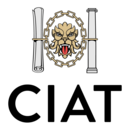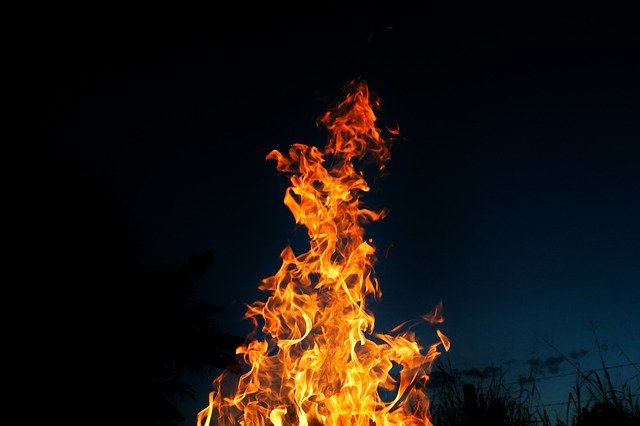Flame retardant floormats
Contents |
[edit] Introduction
Explaining the fire classifications for doormats and why you should make sure to select fire-retardant mats.
Everyone involved in the building industry is rightly paying more and more attention to the materials and processes being used, to make sure that buildings are as safe from fires as possible. This applies even more to multi-tenanted buildings like apartment complexes, retirement/nursing homes and supported living sites. And it's more important not to overlook choosing the right kinds of carpets, flooring and matting, as fire can spread quickly over these surfaces if they're not fire retardant. Non-fire-retardant entrance mats can help flames get out of control, as well as block exit points – presenting a serious risk to lives, belongings and property.
[edit] Testing and classifications
Any fire safety activity is centred around two main areas; reducing the likelihood of a fire starting, and preventing the spread of any fire that does get started. This might sound relatively simple, but the classifications and regulations can be complex. Classifications for fire-retardant materials are designed to help you make the right choice when selecting materials for your properties.
International classifications are designed to ensure that any product or component with a classification marking has been tested to the same standards. Construction products should have been tested and graded against EN 13501-1, the European standard for reaction to fire.
In the case of the 'fire retardant' marking, it means the materials have passed testing that includes exposure to a naked flame and a radiating heat source. For floor coverings and mats, the potential grades that can be awarded are:
- A1 fl – the 'fl' is an abbreviation for 'floor' and a floor covering with this rating is considered non-flammable with no risk of smoke formation.
- A2 fl – non-flammable floor coverings with low levels of organic binding agents.
- B fl – flame-retardant product that has passed the radiating heat test with an intensity of 8 kW/m squared.
- C fl – flame-retardant product that has passed the radiating heat test with an intensity of 4.5 kW/metre squared.
A1 fl and A2 fl levels cannot be achieved by the vast majority of floor coverings including vinyls and textiles. When you are looking for matting, you need to keep an eye out for B fl and C fl markings. These both mean that the mats have been tested and classified as fire retardant.
It's important to note – fire retardant does not mean the item cannot be set alight. It means that the materials used help to stop the spread of any fire that does manage to take hold.
C fl classifications and below should be considered a fire risk. Using these products can present a danger to anyone in a building where they are installed.
[edit] Smoke production
Included in the EN 13501-1 standard is testing of the amount of smoke produced by a material that is burning. It is an important test, as evacuees and firefighters will struggle through hallways or rooms that have filled with smoke.
The grade you want to look for here is 's1'. The 's' stands for 'smoke' and the s1 grade indicates that the product or material produces a manageable or acceptable amount of smoke. The other possible grade, 's2', means that there is too much smoke produced.
Combining the two grades will give us a marking for the flooring and for the smoke production. Your mat should be marked as either Bfl-s1 or Cfl-s1.
[edit] Types of mats
Fire regulations have tightened, but you can still find and fit an entrance mat that has the form and function you would want for your building and for your residents. Fire-retardant entrance mats are available in a huge range of colours and sizes, and with deep piles for comfort, durable finishes for longevity and very respectable dust, dirt and water retention.
First Mats started life as safety matting specialists, but have since expanded to become a complete industrial and commercial supplies company. The focus of First Mats is to provide safety focused products that improve the wellbeing of staff through quality approved products, backed up by extensive knowledge.
This article originally appeared on the CIAT website under the headline, 'Are your doormats flame-retardant?' It was published on 5 August 2021.
--CIAT
[edit] Related articles on Designing Buildings Wiki
Featured articles and news
RTPI leader to become new CIOB Chief Executive Officer
Dr Victoria Hills MRTPI, FICE to take over after Caroline Gumble’s departure.
Social and affordable housing, a long term plan for delivery
The “Delivering a Decade of Renewal for Social and Affordable Housing” strategy sets out future path.
A change to adoptive architecture
Effects of global weather warming on architectural detailing, material choice and human interaction.
The proposed publicly owned and backed subsidiary of Homes England, to facilitate new homes.
How big is the problem and what can we do to mitigate the effects?
Overheating guidance and tools for building designers
A number of cool guides to help with the heat.
The UK's Modern Industrial Strategy: A 10 year plan
Previous consultation criticism, current key elements and general support with some persisting reservations.
Building Safety Regulator reforms
New roles, new staff and a new fast track service pave the way for a single construction regulator.
Architectural Technologist CPDs and Communications
CIAT CPD… and how you can do it!
Cooling centres and cool spaces
Managing extreme heat in cities by directing the public to places for heat stress relief and water sources.
Winter gardens: A brief history and warm variations
Extending the season with glass in different forms and terms.
Restoring Great Yarmouth's Winter Gardens
Transforming one of the least sustainable constructions imaginable.
Construction Skills Mission Board launch sector drive
Newly formed government and industry collaboration set strategy for recruiting an additional 100,000 construction workers a year.
New Architects Code comes into effect in September 2025
ARB Architects Code of Conduct and Practice available with ongoing consultation regarding guidance.
Welsh Skills Body (Medr) launches ambitious plan
The new skills body brings together funding and regulation of tertiary education and research for the devolved nation.
Paul Gandy FCIOB announced as next CIOB President
Former Tilbury Douglas CEO takes helm.
UK Infrastructure: A 10 Year Strategy. In brief with reactions
With the National Infrastructure and Service Transformation Authority (NISTA).
























